I wrote this article in Japanese and translated it into English using ChatGPT. I also used ChatGPT to create the English article title. I did my best to correct any translation mistakes, but please let me know if you find any errors. By the way, I did not use ChatGPT when writing the Japanese article. The entire article was written from scratch by me, Saikawa Goto.
Introduction
Movies and books covered in this article

Three takeaways from this article
- It’s a “failure that shakes up existing science,” which is why it can lead to great contributions.
- Darwin, Kelvin, Hoyle, and other famous geniuses involved.
- Einstein’s “blunders” are very famous, including his brilliant revival.
Self-introduction article


Published Kindle books(Free on Kindle Unlimited)
“The genius Einstein: An easy-to-understand book about interesting science advances that is not too simple based on his life and discoveries: Theory of Relativity, Cosmology and Quantum Theory”
“Why is “lack of imagination” called “communication skills”?: Japanese-specific”negative” communication”
The quotes in the article were translated using ChatGPT from Japanese books, and are not direct quotes from the foreign language original books, even if they exist.
Unraveling the History of “Brilliant Blunders” that Contributed to the Progress of Science
This Book is Not About “Mere Failures”
Although failures are often considered not just bad things, such as in the saying “Failure is the Mother of Innovation”, the word “failures” still carries a negative connotation. Unless there is some special explanation, it would still have a negative image.

That’s why the title of this book is “Brilliant Blunders”. The book reveals that these well-known “blunders” in the world of science have actually contributed something positive.

The beginning of the book states:
The theme of this book is a serious scientific mistake. When I say “scientific mistake,” I mean a serious error in thinking that could ruin entire scientific theories or concepts, or at least fundamentally slow down scientific progress.
In other words, the failures discussed in this book are “grand claims that have been proven to be mistakes.” They proposed theories that could overturn existing ways of thinking or suppress thinking in a certain direction, but in reality, they turned out to be wrong.
However, precisely because they are such “blunders,” they do not end up as mere failures. It would be good to think of it as that there is meaning in the fact that the scientist made such a claim, even if the claim itself is wrong.

In a sense, it can be considered an indirect contribution. For example, a scientist who continuously advocated a wrong theory throughout his life, ultimately led to lively discussions in the scientific community and contributed to a correct understanding. Alternatively, a person who discovered a basic mistake in a scientist’s argument thought, “Let’s put together our own theory while he doesn’t realize his mistake,” and led to a great discovery of the century.
Most failures end up being just “failures.” However, the scientists featured in this book are all historical figures who have left their mark, and even their “blunders” have significant influence. Although this book introduces scientific knowledge, I think that by learning about the “great failures of great scientists,” some may gain the courage to move forward without fear of failure.

In this book, we will look at the scientists and their “blunders” that occurred in various fields. Let’s summarize them below.
Darwin – Theory of evolution
Kelvin – Age of the earth
Pauling – Double helix structure of DNA
Hoyle – Steady-state cosmology
Einstein – Cosmological constant
Among them, Einstein is probably the most famous. His “failure” regarding the cosmological constant is also well-known in the history of science. Knowing this story, you can not only feel that Einstein is a scientists who are simply famous by name but also that he is truly an exceptional scientist.
Each scientist has a chapter dedicated to them. Andin the first half of chapter, it discusses “what great achievements they made,” and in the second half of chapter, it talks about “their blunders.” Now, let’s take a look at the mistakes of each scientist.
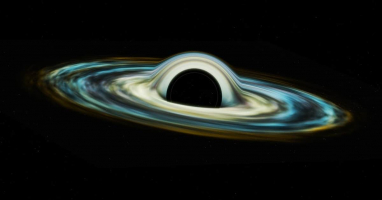
Darwin: Theory of Evolution
The “Darwin blunder” described in this book are a bit hard to explain. To begin with, if I roughly describe the effects of “Darwin’s blunder”, it can be summarized as follows:
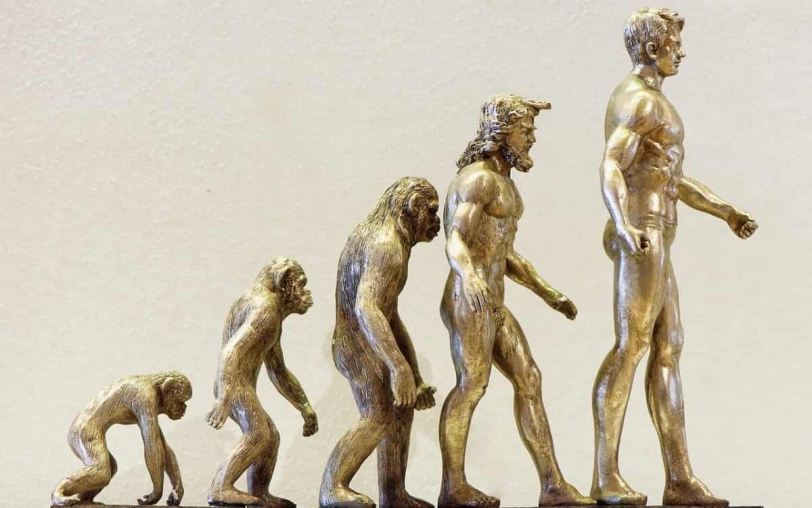
Remarkable theory of evolution was born thanks to his “blunders” that he didn’t realize himself.
Now let’s take a closer look.

The “core” of Darwin’s Theory of evolution lies in the principle of “natural selection,” which states that the survival of the fittest individual leads to the evolution of life. If a sudden mutation occurs in an individual and it is advantageous for the survival of the entire species, then the mutation will eventually become prevalent in the population. Darwin explained this mechanism and contributed greatly to the field of evolutionary biology.
However, when Darwin proposed his Theory of evolution, his argument should not have been valid because “Mendel’s Laws of Inheritance” had not yet been discovered.
This is because natural selection would not occur without the genetic mechanism that Mendel proposed.
During Darwin’s time, the prevailing view on heredity was “blending inheritance.” It was thought that genetic material acted like “liquids” that blend together and mixing them would result in a new genetic makeup. Like mixing white and black paint to create gray, once the colors blend, they cannot be separated again. This type of genetic mechanism where blending occurs and cannot be separated is called “blending inheritance.”

And it’s been known that “natural selection” doesn’t happen in this “blending inheritance”.
“Natural selection” occurs in the mechanism of “Mendel’s Laws of Inheritance” where it’s like shuffling cards. No matter how much you mix the cards, the cards won’t fuse into each other and become inseparable. Similarly, it holds the idea that some kind of non-liquid substance that controls heredity (the existence of “DNA” was unknown in Mendel’s time) mixes and mingles like shuffling cards, causing heredity is Mendel’s Laws of Inheritance.
So, it’s in this Mendel’s genetic mechanism that “natural selection” occurs.

In other words, Darwin made a revolutionary claim that “natural selection is the core of evolution”, but according to the common sense of genetics at that time, this claim was wrong.
However, Darwin did not realize that “natural selection does not occur in blending inheritance”. This is called a “blunder” in this book. However, thanks to that, a magnificent theory called the “Theory of Evolution” was born.
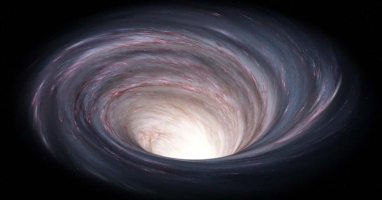
The author writes about Theory of evolution like this.
Considering that Darwin misunderstood some basic facts of genetics, it is truly surprising that much of his theory of evolution was correct.
Exactly. Could this also be the result of genius?
Kelvin; Age of the Earth

Kelvin, too, is a very famous scientist. In science, we often see the unit “K” used to indicate “absolute temperature”, which is named after Kelvin. According to this book, Kelvin produced many great achievements that biographers praised highly and was also had a great personality.
Unfortunately, he had ended up being said something as follow.
Kelvin’s reputation in the scientific community eventually plummeted.
Kelvin in his later years became known as a hindrance to modern physics.
What mistake did he make?


Kelvin’s biggest mistake was related to estimating the “age of the earth.” Using scientific knowledge, he conducted meticulous calculations to estimate the age of the earth.
His conclusion was that the age of the earth was “about 100 million years old.” This means that he estimated that the earth had only existed for 100 million years. However, we now know that the earth is around 4.6 billion years old, so it can be said that he was way off.
The reason for such a big mistake was his assumption that “thermal conduction of the earth was uniform.”
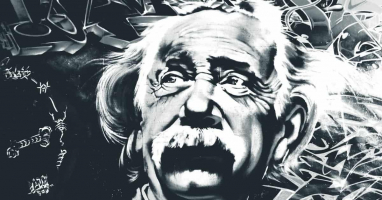
Nowadays, it is known that the mantle inside the Earth is convecting. You may have heard about the continental drift theory (Plate Tectonics), which says that the continents are slowly moving. This is also caused by the convective movement of the mantle.
Even during Kelvin’s time, it was understood that if the mantle were convecting, the thermal conduction of the Earth would not be uniform. Kelvin’s disciple pointed this out to him many times, but he did not listen.
Because, at that time, there was no evidence to prove that the mantle was convecting. Kelvin believed that the mantle was not convecting and therefore the thermal conduction was uniform, and he estimated the age of the Earth based on this.
Kelvin’s estimate was criticized by geologists of his time. Darwin also criticized it, saying that “if we assume that organisms evolved through natural selection, then one hundred million years is too short”. This research of Kelvin’s ended up tarnishing his reputation in his later years.

However, the author evaluates Kelvin’s research in this way:
Kelvin’s calculation of the age of the earth was incorrect, but I think his calculation was still magnificent. Kelvin changed geochronology from vague speculation to solid science based on physical laws.
This critique involves the Bible.
Until Kelvin calculated the age of the earth from a scientific perspective, discussions about the age of the earth were based on the Bible. It may be surprising to us, but the clergy of the time were serious. And in an era when the power of the church was strong, it would have been natural to think that “estimating the age of the earth is not in the realm of science.”
However, Kelvin’s study, which was ultimately incorrect, can be said to have brought about the recognition that “the age of the earth is a domain that can be dealt with in science.” It is the author understandings that this transformation should be highly evaluated.

Pauling: Double Helx Structure of DNA
In this book, the scientist who may be least known to the general public is Pauling. Probably I also haven’t heard of him until I read this book.
However, he was a great scientist who achieved significant accomplishments. Pauling claimed that proteins in cells are made up of chains of amino acids called polypeptides, and he discovered the precise structure that later became known as the “alpha helix.” As someone who is not familiar with this field, I cannot fully appreciate the magnitude of his achievements, but the author describes him as follows:
Pauling was one of the scientists who first realized that biology is essentially Molecular Science supported by the theory of evolution.

At the time, Pauling was highly regarded among scientists, to the point where they would say “do your research desperately before Pauling takes an interest in it.” This means that if Pauling becomes interested in their research area, he will easily surpass them. Therefore, Pauling’s insights were highly trusted.
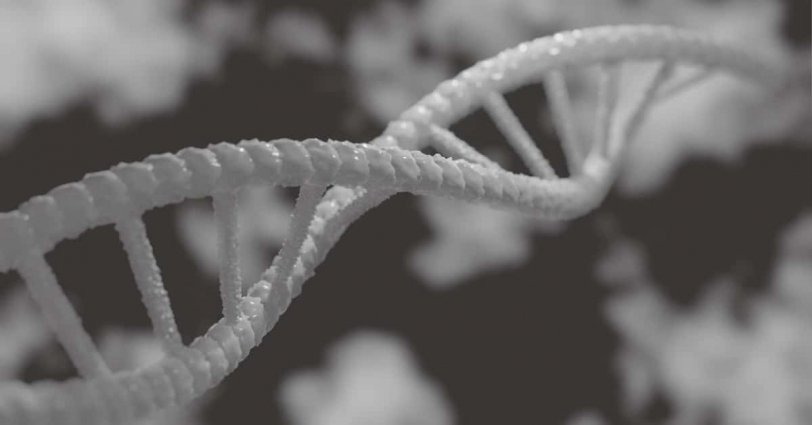
That’s why when Pauling claimed to have discovered the structure of DNA, everyone felt like they had been beaten to the punch. Pauling had taken an interest in the subject, and everyone thought that his research results must be correct.

However, the “structure of DNA” presented by Pauling was unbelievably shoddy. “DNA” is a type of “nucleic acid,” in short, which is an “acid,” but the structure shown by Pauling was not something that could be called an “acid.” It is impossible for something that is not an “acid” to be the “structure of DNA.”
Pauling, whose name was resounding in the scientific community, had made a mistake in the most fundamental part of chemistry.
However, in a sense, Pauling’s presentation had a positive effect. It prompted Watson and Crick, known as the discoverers of DNA structure, to hurry up.

They thought, “Let’s announce our results as soon as possible before Pauling realizes his basic mistake and corrects it.” And that’s how it led to the great discovery of the century.
Of all the examples discussed in this book, only Pauling’s failure can be said to have had a positive contribution to only specific individual. In other examples, it’s said that the failure contributed to the entire scientific community, but in Pauling’s case, it can be said that it only had a positive impact on Watson and Crick. Of course, this opinion is based on the assumption that if Pauling had not made a basic mistake, he would have discovered the structure of DNA himself.
Pauling must have been quite frustrated with himself.
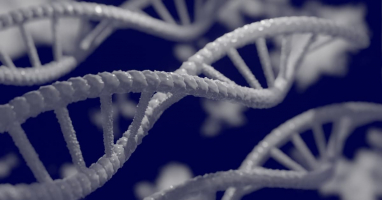
Hoyle: Steady-State Cosmology
Hoyle, a scientist, is known as the namer of “Big Bang.” However, he was not a supporter of the “Big Bang Theory.” It is a common theory that the term that he used to make fun of the fact that “the universe should not had started with an explosion (Big Bang)” was widely widespread. And as a leading figure in the cosmological debate over the “Big Bang Theory,” he would ultimately make a significant mistake.
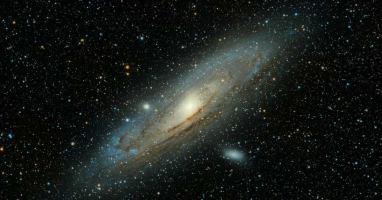
Before talking about that, let’s first write about the achievements of Hoyle as a scientist. He tackled the difficult problem of how various elements listed in the periodic table were created for many years, and achieved a great study that revealed all of it.
The “Big Bang Theory” was a theory that was not easily accepted due to its radicalness, but it was known early on that “if the Big Bang happened, it could explain why light elements were born.” In the universe we live in, hydrogen, the lightest element, accounts for 90% of all elements, and the Big Bang Theory was able to explain why such a biased abundance ratio exists.


However, the “Big Bang Theory” was unable to explain how heavy elements were created. This is where Hoyle comes in. He proposed that elements were created inside stars and then spread throughout the universe via supernova explosions. He also used an acrobatic argument later known as the “anthropic principle” to make a prediction and solve the final problem of nucleosynthesis.
Furthermore, Hoyle can be considered a highly accomplished individual not only in the field of nucleosynthesis but also in nuclear astrophysics, leaving an outstanding achievement among prominent scientists.

Now, one of the “blunders” of such a person highlighted in this book is the “steady-state cosmology”, which was long popular as a rival to the “Big Bang Theory”. This is the idea that “the universe has remained in the same state without changing from the past to the present and into the future”. From our perspective, who knows that the universe began with the Big Bang, this may seem like a strange claim, but at that time, which there was little observational evidence, it was widely supported. The author also writes as follows:
I think that the idea of steady-state cosmology itself was an excellent idea when it was proposed.
Both “Big Bang Theory” and “steady-state cosmology” were theories that were difficult to prove by observation, and it took time to reach a clear conclusion. Initially, many scientists who wanted to believe that “the universe is a static entity without change” supported “steady-state cosmology”. However, gradually, evidence for the Big Bang Theory accumulated and, although slowly, the Big Bang Theory became more dominant.

And ultimately, it was the discovery of something called the “cosmic microwave background” that proved the correctness of the Big Bang Theory. This is because the cosmic microwave background, which the Big Bang Theory predicted, could not be explained by the steady-state cosmology.
However, even after this “decisive evidence” was found, it is said that Hoyle did not accept the Big Bang Theory. Hoyle is known to have disliked the Big Bang Theory until he died.
The author calls the act of persisting in the steady-state cosmology even after it was clearly shown to be incorrect a “blunder”. However, it is important to note that Hoyle’s criticism of the Big Bang Theory was not meaningless.
In summary, even if Hoyle’s theory was ultimately proven wrong, it was always stimulating and undoubtedly lifted the entire field, triggering the birth of new theories.

Just like how having rivals can help each other improve, having opposing theories and discussing them can lead to progress. The Big Bang Theory, for example, was refined through attacks from those who advocated for the “steady-state cosmology” like Hoyle. This controversy also draws attention to science as a whole, leading to even more lively discussions.
The dispute between the Big Bang Theory and the steady-state cosmology was quite intense in the history of science, and Hoyle played a significant role as one of the instigators of such controversy.
Einstein: Cosmological Constant
The story of “Einstein’s failure” is very famous and is often introduced in various books. There is already an article touching on this topic in this blog, so please read that for more details.


Roughly writing the outline is as follows.
Einstein, who wished for a static universe, incorporated a trick called “cosmological term” into his own equations, but later retracted it. However, that “cosmological term” has now been revived under the name “cosmological constant”.

Actually, there are two failures here. One is that “cosmological term” was added to the equation. The other is that “cosmological term” was removed from the equation.
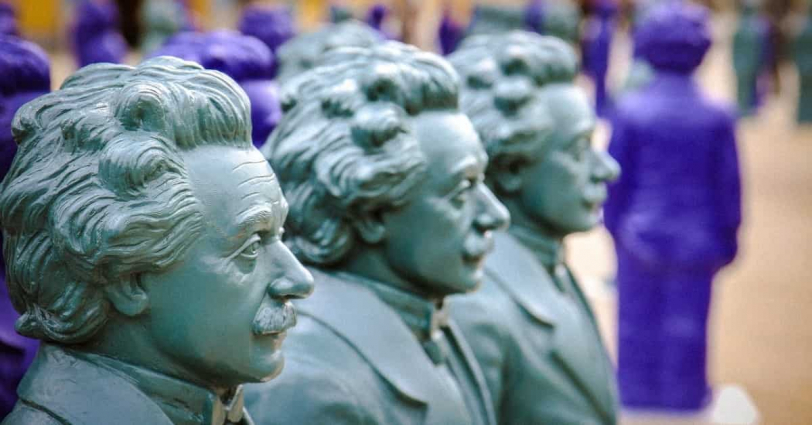
It was only after Einstein’s death that it was discovered that “Einstein’s removal of the cosmological term may have been a mistake.” We can understand Einstein’s tremendous influence in the sense that he continues to influence modern science even after his death.
In the above-mentioned article, I wrote that “this episode is likely to be the creation of a scientist named Gamow.” And it is the author of this book who “thought it was probably Gamow’s creation and did the research.” Let’s end this article by briefly touching on this point.

The story goes that Einstein said, “the biggest mistake of my life,” after retracting “adding the cosmological term to the equation.” However, this story only appears in a book by a scientist named Gamow, who was known for playing pranks. Some people originally thought it was just Gamow’s creation.
Therefore, the author of this book decided to investigate whether Einstein was close to Gamow at the time when the statement is said to have been made. The statement only exists in Gamow’s book. So, if we think about it normally, it would mean that “he told onlly Gamow about the statement.” This would be hard to imagine if Einstein and Gamow were not close.
The author then searched through various materials and concluded that “at the time, Einstein and Gamow were unlikely to have been very close.” This is never evidence that supports the “Gamow’s creation theory,” but it can increase the possibility of it being true.

Conclusion
In this article, have you come to understand that even top-notch scientists can make blunders?
To be a bit more practical, I’ve heard that in Japan, research budgets are being allocated only to studies that can produce immediate results or be immediately put to practical use. Of course, that’s important too, but research that may not produce any meaningful results, or whose outcomes are completely unknown, is just as important.

Japan has many scientists who have won the Nobel Prize, but a lot of them conducted research in fields that are not practical, called “fundamental research”. Their research could be diverted to something useful later as a result, but, at the time they are researching, they often have no idea what it will become.
If the budget for fundamental research is reduced, the level of scientific research in Japan will decline rapidly.
That’s why I think it’s important to understand the role of “blunders” in science and to create a society that can properly evaluate scientific research.

Published Kindle books(Free on Kindle Unlimited)
“The genius Einstein: An easy-to-understand book about interesting science advances that is not too simple based on his life and discoveries: Theory of Relativity, Cosmology and Quantum Theory”
“Why is “lack of imagination” called “communication skills”?: Japanese-specific”negative” communication”







コメント